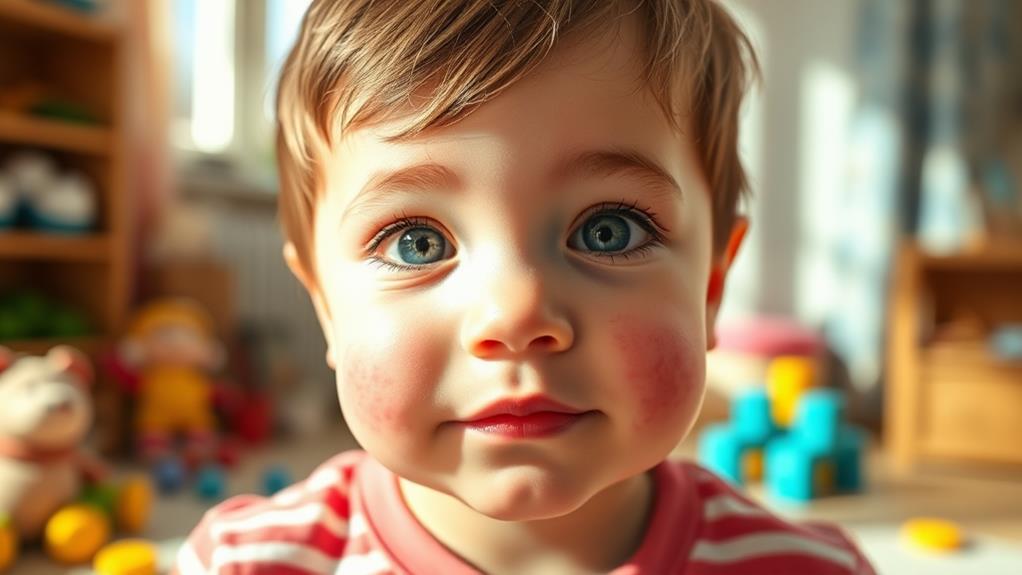Slapped Cheek Syndrome: Key Facts & What to Know
If you’ve noticed a bright red rash on a child’s cheeks, you might be wondering about Slapped Cheek Syndrome, or fifth disease. This viral infection, primarily affecting kids aged 5 to 15, often comes with mild symptoms that can be mistaken for something else. While most recover without complications, certain groups need to be cautious. Understanding how it spreads and the symptoms to watch for can be essential in managing this condition effectively. So, what should you really know about this virus and its implications?
What Is Slapped Cheek Syndrome
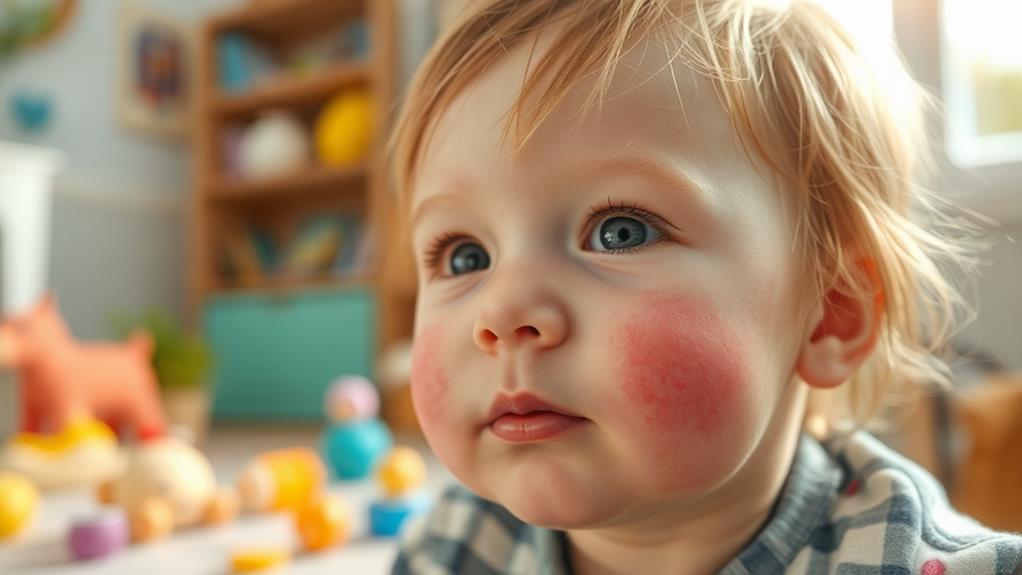
Slapped Cheek Syndrome, also known as fifth disease, is a viral infection primarily caused by the parvovirus B19. It usually shows up as a bright red rash on the cheeks, making it look like someone slapped you—hence the name! You might notice the rash spreading to other parts of the body, like the arms and legs, but don’t worry, it’s generally not serious.
If you or someone you know catches it, you might experience mild symptoms first, like a fever, headache, or sore throat. It can feel a bit like catching a cold, but the rash is the star of the show. Kids are the most likely to get it, especially those between 5 and 15 years old.
The good news? Most people recover without any problems. Once you’ve had it, you’re usually immune, so you won’t need to worry about it again. Just think of it as a rite of passage for many kids!
Causes of Slapped Cheek Syndrome
The primary cause of Slapped Cheek Syndrome is infection with the parvovirus B19, a common virus that spreads easily among children.
You might be wondering how this virus gets around. Well, it usually spreads through respiratory droplets when an infected person coughs or sneezes. So, if your child is in close quarters with others, like at school or during playdates, they could catch it pretty quickly.
Once someone gets the virus, it takes about 4 to 14 days for symptoms to show up. Isn’t it sneaky? But don’t worry! Many kids won’t even realize they’ve it because the symptoms can be mild.
Interestingly, adults can catch parvovirus B19 too, but it’s less common.
And while it’s more of a nuisance for kids, it can cause some issues for pregnant women or individuals with certain health conditions.
Symptoms to Watch For
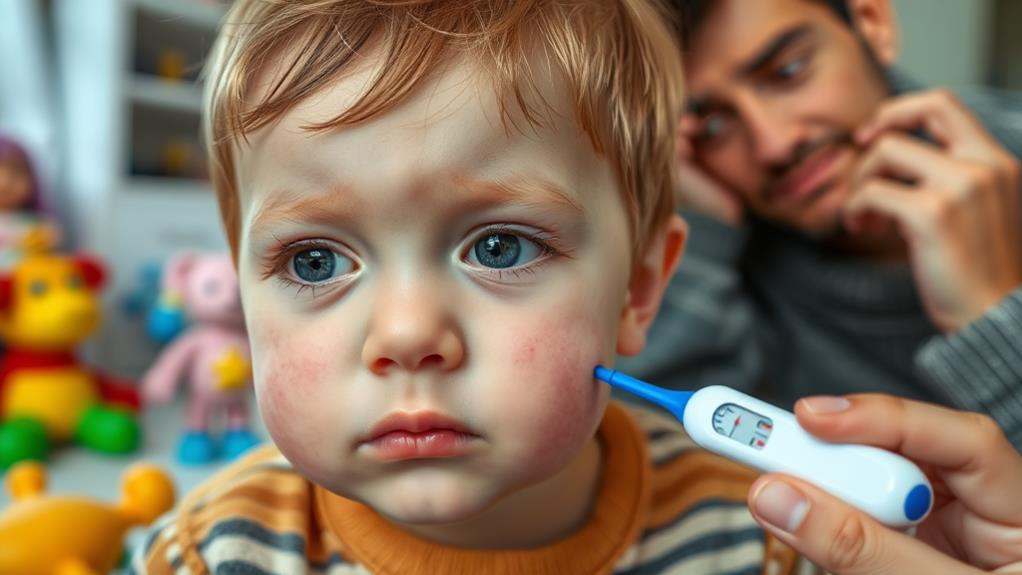
Noticing the early signs of Slapped Cheek Syndrome can help you manage your child’s comfort and avoid spreading the virus. One of the first symptoms you might see is a bright red rash on their cheeks. It looks like someone slapped them, hence the name! This rash usually appears after a few days of mild fever, fatigue, or a runny nose.
You may also notice your child feeling a bit more tired than usual, which can be a telltale sign. As the rash develops, it can spread to the trunk and limbs, looking like lace or a net on their skin. It can be itchy, so keep an eye on how much they scratch! Some kids might’ve a sore throat or complain of joint pain, especially older ones.
While it sounds a bit scary, don’t worry too much. Slapped Cheek Syndrome is usually mild and goes away on its own. Just make certain your child stays comfortable, hydrated, and gets plenty of rest.
If symptoms worsen, or if you’ve got any concerns, don’t hesitate to reach out to your pediatrician for advice. You’re doing great by staying informed!
How It Spreads
Understanding how Slapped Cheek Syndrome spreads is key to preventing its transmission, especially if your child is showing symptoms. This illness, caused by the parvovirus B19, mainly spreads through respiratory droplets. You know, those tiny little droplets that fly when someone coughs or sneezes? If your child’s friend has a runny nose or a cough, they could unknowingly share the virus.
You should also keep in mind that the virus can spread even before a person shows any symptoms. That’s right! A child can be contagious before you even see that telltale red rash. It’s like a sneaky ninja virus!
Direct contact with an infected person’s saliva or mucus can also spread the virus. So, if your child shares drinks or snacks with a friend who’s not feeling well, it could lead to trouble.
Luckily, once your child has the rash, they’re usually no longer contagious. To keep everyone safe, encourage good hygiene habits, like washing hands frequently and covering their mouths when they cough. It’s a simple way to keep the sneaky virus at bay!
At-Risk Groups
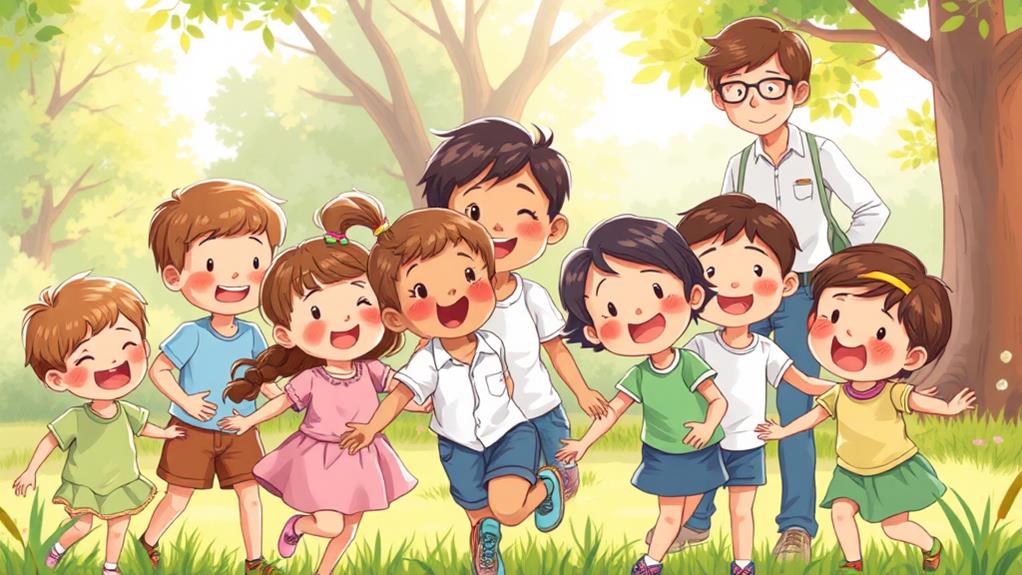
Who’s most at risk for Slapped Cheek Syndrome? Well, this illness mostly affects kids, especially those between 5 and 15 years old. If you’re a parent, you might want to keep an eye on your little ones during outbreaks. Kids love to play together, and that’s how the virus spreads!
But it’s not just kids who need to be cautious. Pregnant women are also at risk. If you’re expecting, your immune system changes, making you more vulnerable to infections. Slapped Cheek Syndrome can be a concern because it could affect the baby if contracted during pregnancy.
People with weakened immune systems, like those undergoing certain medical treatments, should be extra careful too. If you or someone you know falls into these groups, staying informed is key.
Even though it’s more common in children, adults can catch it too, especially if they haven’t had it before. So, if you’ve got a little one with rosy cheeks, it’s worth checking in with your doctor.
Diagnosis Process
When you suspect that your child has Slapped Cheek Syndrome, the diagnosis process typically starts with a healthcare provider’s evaluation of the symptoms. You’ll want to describe any rashes, fever, or other signs your child is showing.
Often, the classic “slapped cheek” appearance, where the cheeks look bright red, can tip off the doctor right away. Your healthcare provider might ask a few questions about your child’s recent activities, like if they’ve been around other kids who are sick.
It’s like an episode of a detective show—every detail matters! Blood tests aren’t usually necessary, but if your child has specific symptoms, the doctor might recommend them.
Keep in mind that Slapped Cheek Syndrome is often mild and goes away on its own. However, it’s important to get a professional opinion to rule out other conditions.
After the diagnosis, you can breathe a little easier, knowing what you’re dealing with. Just remember, while it may sound serious, most kids bounce back quickly, ready to resume their adventures.
Treatment Options Available
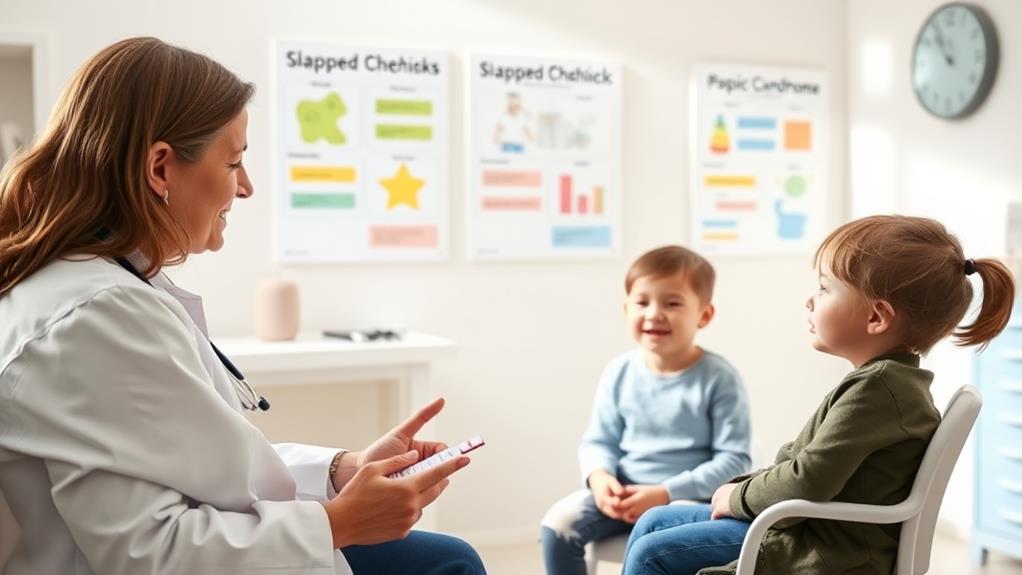
Slapped Cheek Syndrome usually doesn’t require specific treatment, as most cases resolve on their own. That’s right! Your body is pretty good at handling this pesky virus.
However, if you or your child feels uncomfortable, there are some things you can do to help alleviate those symptoms.
For starters, if there’s a fever, you might want to give some over-the-counter medication like acetaminophen or ibuprofen. These can help bring down that fever and make you feel a bit better.
If the rash is itchy or bothersome, calamine lotion can be a friend, soothing that skin so you can focus on more fun things.
It’s always good to stay hydrated, too! Drinking plenty of fluids like water or juice keeps you feeling your best.
And remember, rest is essential. Your body needs time to fight off the virus, so don’t hesitate to take it easy.
Most importantly, keep an eye on any symptoms. If things don’t seem to improve or if you have concerns, it’s wise to chat with your doctor.
They can help guarantee everything’s on track. After all, your health is number one!
Home Remedies
If you’re looking for ways to ease the discomfort of Slapped Cheek Syndrome at home, several remedies can help.
First, try applying a cool, damp cloth to the cheeks. This can provide relief from itching and soothe irritated skin, making your little one feel a bit better.
Next, keep your child hydrated. Drinking plenty of fluids helps flush out toxins and can improve their overall comfort.
You might also consider giving your child over-the-counter pain relievers, like acetaminophen or ibuprofen, to reduce fever and discomfort. Just be sure to follow the directions on the label.
If they’re feeling itchy, a gentle, fragrance-free moisturizer can help keep the skin hydrated and reduce irritation.
Additionally, encourage your child to rest. A cozy nap can work wonders, helping their body fight off any lingering symptoms.
Finally, offer lots of cuddles and reassurance. Sometimes, a little love is all they need to feel better!
Preventive Measures

If your child is in a crowded setting, like school or daycare, talk to the staff about keeping things tidy.
Regularly disinfecting toys and surfaces helps keep germs at bay. Also, try to avoid close contact with anyone who’s showing signs of illness, especially during outbreaks.
Keep an eye on your child’s overall health. A well-balanced diet and plenty of sleep can boost their immune system, making them more resilient against infections.
Lastly, don’t forget to encourage them to be mindful of their own health. If they feel unwell, it’s okay to take a break and rest.
After all, even superheroes need a day off!
When to Seek Medical Help
Keeping your child healthy is important, but sometimes illness can still occur. If you notice symptoms of slapped cheek syndrome, most kids recover well without much fuss.
However, there are times you should reach out to a doctor. If your child has a high fever that just won’t budge, or if they seem unusually tired and cranky, it’s a good idea to call for medical advice.
You should also seek help if your child develops a rash that spreads rapidly or takes on a strange appearance. Sometimes, slapped cheek can lead to other issues, like joint pain or complications in kids with certain health conditions.
If your child starts complaining about sore joints or seems to be in pain, don’t hesitate to get them checked out.
And remember, trust your instincts! If something just doesn’t feel right, it’s better to be safe than sorry.
After all, when it comes to your kid’s health, you’re their best advocate. So don’t ignore your gut feelings—those can be more powerful than a superhero!
